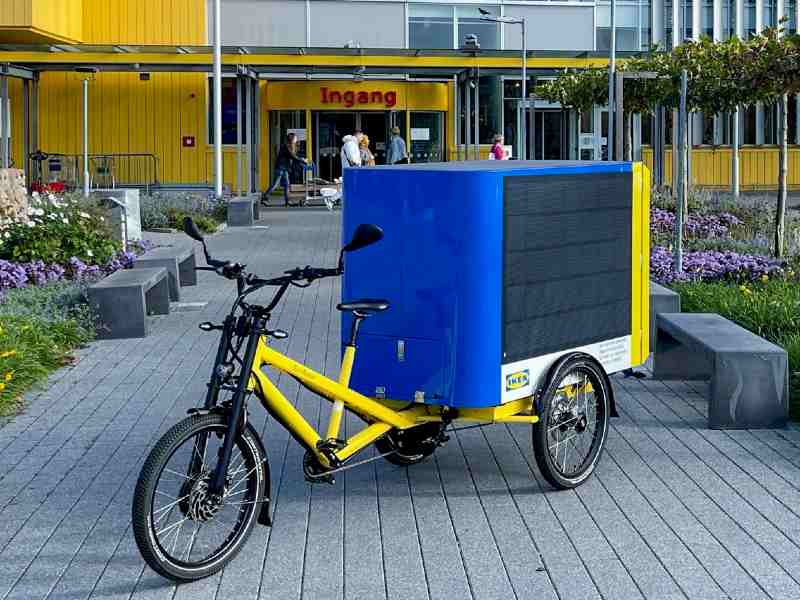 Image credit: IKEA
Image credit: IKEA
Retail giant IKEA has adopted solar-powered cargo bikes to ensure a more sustainable alternative for home delivery transport.
During the last year, the IKEA store in Delft, The Netherlands, completed a pilot using a solar-powered cargo bike for delivering products to its customers within the city centre around the store.
After evaluating the pilot, IKEA Systems B.V. has decided to scale up and give all IKEA retailers around the world the option of a more sustainable alternative to their home delivery fleet.
Touted as the world’s first solar-powered cargo bike, SunRider accommodates up to 100% solar charging by solar panels built into the cargo box. Furthermore, it emits 67% less CO2 than a conventional cargo e-bike.
“This Sunrider bike can accommodate roughly 90 per cent of the IKEA product range and emits 98 per cent less CO2 than modern diesel vans. For IKEA, it’s important to explore new ways to improve the service offer for the customers, both from a more sustainable, affordable and accessible perspective. The solar-powered cargo bike does all that”, says Helene Davidsson, sustainability manager, Inter IKEA Systems B.V.
Keeping last-mile services sustainable and cost-effective while meeting customers’ expectations has been challenging for the retailer. To this end, IKEA has focused on finding new logistics and customer fulfilment solutions that can meet the need of urban environments and increased e-commerce, while also being environmentally friendly.
“We want to meet more people, and many of our future customers will live in cities with limited access to transportation. This challenge provides a great opportunity to explore new ways of making our products available. The solar-powered cargo bike will be a valuable addition to last-mile service, as it offers a quiet, emission-free alternative that can also bypass traffic congestion”, says Helene Davidsson.
For the last couple of years, IKEA retailers have been introducing electrical trucks for home delivery services. By 2030, the company aims to become climate positive by reducing more greenhouse gas emissions than the value chain emits.
